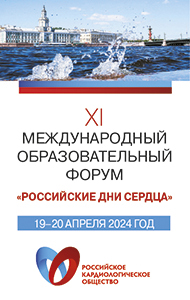High Prevalence of Masked Uncontrolled Hypertension in People With Treated Hypertension
Study Question:
Do controlled clinical blood pressure (BP) measures reflect controlled BP at home?
Methods:
Data from the Spanish Society of Hypertension Ambulatory Blood Pressure Monitoring (ABPM) Registry were used for the present analysis. Patients with treated and controlled BP as measured at clinical visits were included. Controlled BP was defined by current international guidelines as systolic BP in the clinic of 140 mm Hg or lower and diastolic BP of 90 mm Hg or lower. Masked uncontrolled hypertension (HTN) was defined as a mean 24-hour ABPM average remaining elevated (24-hour systolic BP ≥130 mm Hg and/or 24-hour diastolic BP ≥80 mm Hg) when clinic BP was controlled.
Results:
From a total of 62,788 patients with treated BP in the registry, 14,840 were identified as having treated and controlled BP per clinical measurements. Of these patients, 4,608 (31.1%) were observed to have masked uncontrolled HTN by 24-hour ABPM criteria; mean age in these patients was 59.4 years and 59.7% were men. The prevalence of masked uncontrolled HTN was higher in males, patients with borderline clinic BP (130-9/80-9 mm Hg), and patients with other cardiovascular risk factors including current smoking, diabetes, and obesity. The percentage of patients with masked uncontrolled HTN receiving monotherapy for HTN did not differ from those patients optimally controlled. Masked uncontrolled HTN was most often because of poor control of nocturnal BP, with the proportion of patients in whom masked uncontrolled HTN was solely attributable to an elevated nocturnal BP almost double that solely attributable to daytime BP elevation (24.3 vs. 12.9%, p < 0.001).
Conclusions:
The investigators concluded that the prevalence of masked suboptimal BP control in patients with treated and well controlled clinic BP is high; suggesting that frequent use of ABPM testing to confirm BP control, particularly among higher risk groups, is warranted.
Perspective:
These data suggest that a significant portion of patients who appear to have well controlled HTN may have higher BP, in particular at night. However, further research is needed to understand the clinical implications of these findings and the cost-benefits of ABPM among patients with masked HTN. In addition, the impact of sleep apnea in those with masked uncontrolled HTN have sleep apnea needs to be considered.
Source: cardiometabolic.cardiosource.org






